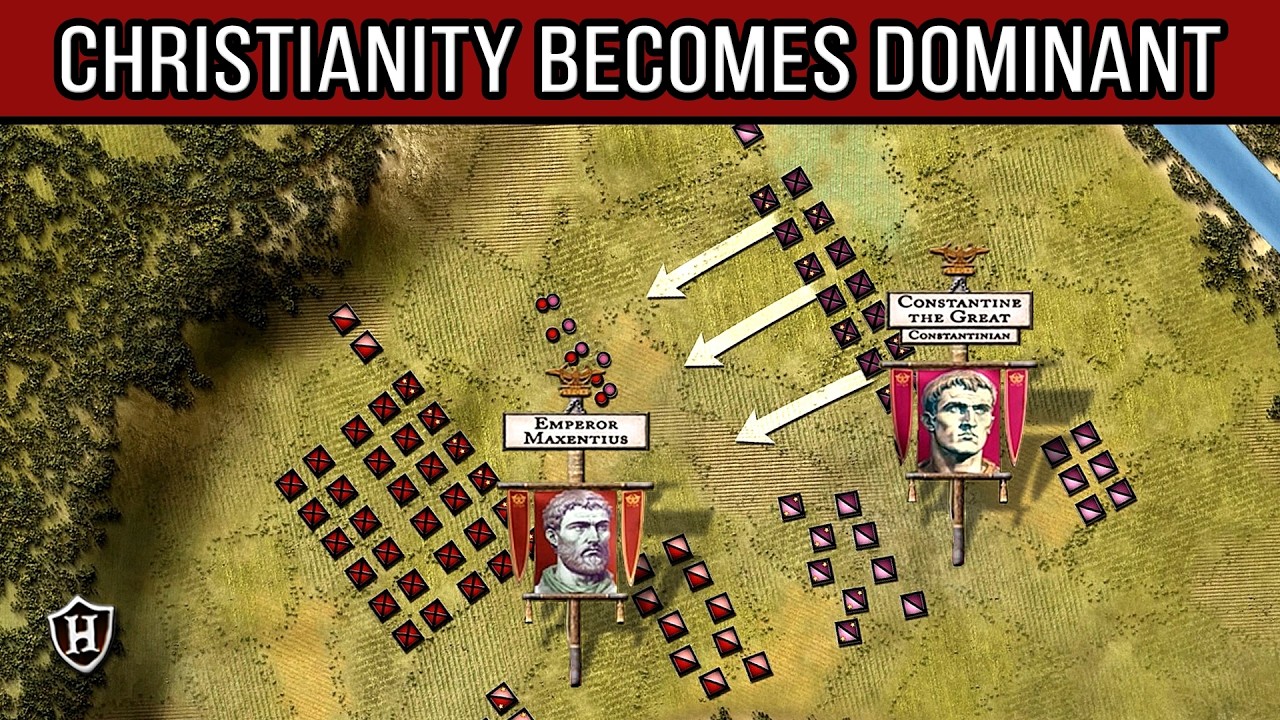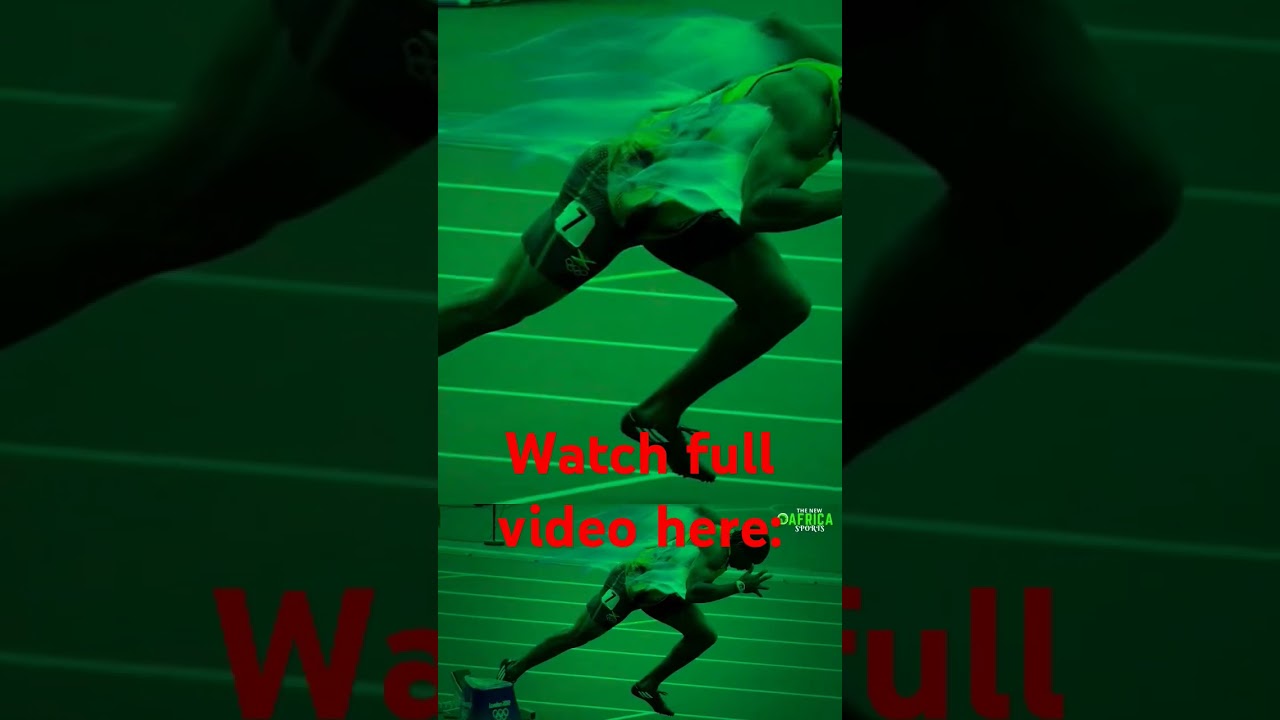
When Christianity became dominant – Battle of the Milvian Bridge, 312 – Constantine's Triumph
When Christianity became dominant – Battle of the Milvian Bridge, 312 – Constantine's Triumph
🚩 Let our sponsor BetterHelp connect you to a therapist who can support you – all from the comfort of your own home. Visit https://betterhelp.com/historymarche and enjoy a special discount on your first month.
🚩 If you have any questions about the brand relating to how the therapists are licensed, their privacy policy, or therapist…
source
Reviews
0 %













🚩 Let our sponsor BetterHelp connect you to a therapist who can support you – all from the comfort of your own home. Visit https://betterhelp.com/historymarche and enjoy a special discount on your first month.
🚩 If you have any questions about the brand relating to how the therapists are licensed, their privacy policy, or therapist compensation model, check out this FAQ: https://www.betterhelp.com/your-questions-answered/
🚩 If you like what you see, consider supporting my work on Patreon and you get ad-free early access to my videos for as little as $1 https://www.patreon.com/historymarche — You can also show your support by subscribing to the channel and liking the video. Thank you for watching.
History blames Constantine the Great for the fall of the Roman Empire. His adoption of the Christian religion weakened the empire because the doctrines taught by his foreign religion promoted peace and servility.
The precepts of thou shalt not kill and forgiveness of sins turned Roman soldiers into wimps and cowards who could not fight off the ferocious attacks of the Sassanid Persians and the Barbarians.
To make matters worse, Constantine's adoption of Christianity wasn't heartfelt. Rather it was a political and cynical ploy executed by a cruel man to unite a disintegrating empire. Constantine was originally a worshipper of the Unconquered Sun, (Deus Sol Invictus), so the dream to carry crosses with the above stated inscriptions makes no sense.
Constantine was a christian in name only, (he was baptized a few months before his death) who continued the practices of slavery and public executions in Rome. In fact, he put his first son, Crispus and his wife to death on contrived charges of adultery.
Great video ❤❤❤ I will say prayers for your father
And here is the moment time travelers used flying drones in the shape of a cross to change history…
great job! Thank you.
Thanks
I think only Constantine and Pompey had the title “the great”.
This battle was one of the most important battles in history!! Without Constantine, we wouldn’t have famous sites like Hagia Sophia or Westminster Abbey.
Thanks for the effort
Me that am testing Invasio Barbarorum Imperium Costantinii for Rome 1 with Maxentius ⚔️😑
I don't believe leaving a sacrifice to the algorithm 😉 Wait, I just did!!!
May this sacrifice serve to appease the algorithm
Let be honest… Christianity starts the fall of Ancient Rome.
From inside.
Rest is more or less known.
Same to Vikings. They disappear . Christianity take over..
This video was perfect. I'm a long time fan but this one had me on the edge of my seat. I've sent you a thank you and I'm already looking forward to the next video!!
Bedankt
I wish the best for you and your father and the rest of your familly, keep taking care of yourself and others close to you, do what you love
I've made big mistakes, but I've never made war against Constantine the Great. I don't feel so dumb. 🤓
Both are great : you, and the History you teach to us. Thank you ❤
Deus Vult.
Thanks badasses christians for giving us an era of above 1000 years without muslims.
Rome destroyed itself
I had no idea the Milvian Bridge was such a hard-fought battle! Thank you for once again providing top-tier military history content.
As an American Coptic who lived in both cultures, religion is ideaology and prioritizing relegion over race and Ethnicity will lead to destruction. No country should submit to ideadiology on the expense of race.
The first crusader 🤣
Maxentius died like a clown.. What a disgraceful way to die.
This is a great production full of depth good job
Tabloid/click bait title.Christianity didn't became dominant right after this battle.
My name is Konstantin same
2Kuula
Hoiatus eksiõpetajate eest
1 Aga rahva seas oli ka valeprohveteid, nõnda nagu teiegi
sekka tuleb valeõpetajaid, kes vargsi toovad sisse hukutavaid
eksiõpetusi ja salgavad ära Issanda, kes on nad vabaks ostnud. Nad
tõmbavad iseeneste peale äkilise hukatuse.
2 Ja paljud järgivad neid nende kõlvatuses ning nende tõttu teotatakse
tõe teed.
3 Ja ahnitsedes püüavad nad teid võltside sõnadega ära osta. Nende
mõõt on ammu juba täis ja nende hukatus ei tuku.
4 Jah, Jumal ei säästnud patustanud ingleidki, vaid tõukas
nad põrgupimeduse soppidesse kinnipidamiseks kuni kohtuni.
5 Ta ei säästnud muistset maailma, vaid, saates jumalakartmatute
maailma peale veeuputuse, kaitses üksnes õigusekuulutajat Noad ning
tema omasid, kokku kaheksat;
6 ta muutis tuhaks Soodoma ja Gomorra linnad, mõistes need hukka
hävinguks ja pannes hoiatustähiseks tulevastele
jumalakartmatutele.
7 Ta kiskus hukatusest välja õige mehe Loti, keda kõlvatud inimesed vaevasid oma
liiderliku eluviisiga,
8 sest nende seas elades ning kõike seda nähes ja kuuldes oli see õige
piinanud oma õiglast hinge päevast päeva ülekohtuste tegude pärast.
9 Nii oskab Issand küll jumalakartlikke kiusatusest välja kiskuda,
ülekohtusi aga nuhtlemiseks kinni pidada kohtupäevani.
10 Iseäranis nuhtleb Issand neid, kes rüvedas himus elavad
lihaliku loomuse järgi ning põlgavad Issanda valitsust. Need on jultunud
ja ennast täis ega põrka tagasi teotamast kirkuseingleid,
11 kuigi isegi inglid, kellel on rohkem jõudu ja väge, ei
lausu nende kohta teotavat otsust Issanda ees.
12 Ent need on nagu mõistmatud loomad, kes
on loomu poolest sündinud püüdmiseks ja hukkamiseks; nad teotavad seda,
mida nad ei mõista, ja hukkuvad oma hukatuses,
13 karistatuna ülekohtu eest ülekohtu palgaga. Nad peavad lõbuks
priisata päise päeva ajal, need mustuse- ja häbiplekid, kes
turgutavad end oma lõbudes, kui nad pidutsevad koos teiega.
14 Nende silmad on täis abielurikkumist ning neil ei saa kunagi patust
küllalt, nad ahvatlevad kõikuvaid hingi, neil on
ahnitsema harjunud süda, nad on needuse lapsed.
15 Nad on loobunud otseteest ja eksinud ära, järgides teed, mida
läks Beori poeg
Bileam, kes armastas ülekohtu palka,
16 sai aga noomida oma üleastumise pärast: hääletu koormaloom rääkis
inimhäälega ja takistas prohveti meeletust.
17 Need on veeta allikad, marust aetavad udupilved, neile
on määratud pilkane pimedus.
18 Sest rääkides tühiseid ja õõnsaid sõnu, ahvatlevad nad kõlvatute
lihahimudega neid, kes hiljuti on jõudnud ära põgeneda eksituses elavate
seast,
19 kes, tõotades teistele vabadust, on ise kaduvuse orjad; sest
kellele on keegi alistatud, selle orjaks ta on saanud.
20 Kui nad on kord ära põgenenud maailma saastast meie Issanda
ja Päästja Jeesuse Kristuse tunnetuse kaudu, pärast aga
jälle vajuvad sellesse saasta ja jäävad alla, siis on ju nende viimane lugu
halvem kui esimene.
21 Sest neile oleks olnud parem, et õiguse tee oleks neile jäänud
tundmata, kui et seda äratundnuna pöörata selg nende kätte antud pühale käsule.
22 Nendele on tulnud kätte see, mida tõeline vanasõna ütleb: „Koer
pöördub tagasi oma okse juurde” ja „Pestud emis läheb porisse
püherdama”.
Eestikeelne Piibel 1997
3Kuula
Issanda päeva tulemisest
1 Mu armsad, see on nüüd juba teine kiri, mille ma teile kirjutan.
Mõlemas ma virgutan meenutamise kaudu teie selget mõistust,
2 et te mäletaksite sõnu, mida pühad prohvetid enne on rääkinud,
ning Issanda ja Päästja käsku teie apostlitelt.
3 Seda teadke esmalt, et viimseil päevil tuleb pilkesõnadega pilkajaid,
kes käivad iseenese himude järgi
4 ja ütlevad: „Kus on tema tulemise tõotus? Sest pärast seda, kui
isad on läinud magama, on jäänud kõik nõnda nagu loomise algusest
peale.”
5 Aga seda väites jääb neil kahe silma vahele, et muiste olid
olemas taevad ja veest tuli maa, mis püsis koos vee läbi Jumala sõna
jõul,
6 mille läbi tookordne maailm hukkus veeuputuses.
7 Aga praegusi taevaid ja maad, mis on säilitatud sellesama sõna
jõul, hoitakse tule jaoks jumalakartmatute inimeste kohtu ja
hukatuse päevaks.
8 Aga selle juures, mu armsad, ärgu jäägu teie eest varjule, et Issanda
juures on üks päev nagu tuhat aastat ja tuhat aastat nagu üks päev.
9 Issand ei viivita tõotust täitmast, nii nagu mõned peavad seda
viivitamiseks, vaid tema on teie vastu pikameelne, sest ta ei taha,
et keegi hukkuks, vaid et kõik jõuaksid meeleparandusele.
10 Aga Issanda päev tuleb nagu varas. Siis hukkuvad taevad raginal,
algained lagunevad lõõmates ning maad ja tema tegusid ei leita enam.
11 Kui see kõik nõnda laguneb – missugused siis peate olema teie
pühas eluviisis ja jumalakartuses,
12 oodates ja kiirendades Jumala päeva tulemist, mil
taevad põledes lagunevad ja algained lõõmates ära sulavad.
13 Meie ootame aga tema tõotuse järgi uusi taevaid ja uut maad, kus
elab õigus.
Lõpumanitsus
14 Seepärast, mu armsad, olge seda oodates toimekad, et teid
leitaks tema ees veatuina ja laitmatuina rahus.
15 Ja meie Issanda pikka meelt pidage päästeks, nõnda kui ka meie
armas vend Paulus teile on kirjutanud temale antud tarkust mööda.
16 Sama ütleb ta kõikides kirjades, kus ta räägib neist asjust. Nendes on
küll mõndagi raskesti mõistetavat, mida õppimata ja kõikuvad inimesed
väänavad nagu muidki raamatuid iseendale hukatuseks.
17 Mu armsad, et te nüüd seda ette teate, siis olge valvsad, et
teid ei kistaks kaasa kõlbluseta inimeste eksitustega ja te ei langeks
ära oma kindlalt aluselt.
18 Kasvage meie Issanda ja Päästja Jeesuse Kristuse armus ja
tundmises! Tema päralt olgu kirkus nüüd ja igaviku päevil! Aamen.
Watching while playing total war.
However, the chi-rho was first seen on coins of Ptolemy III before 250BC, one of many proofs you can find that Christianity is much older than Christians think. For example, the Chinese cross, perhaps the oldest in human symbology, best preserves the devotion of Christian soldiers fighting the adversary's spiritual/materialist communist demons: 士
The monogram is a memory of the centaur Chiron, the last Tauran messiah before humanity became the final chosen species. Also of interest are the tau-rho of the Egyptian ankh and the tau-omicron Celtic cross that represented the tau-omicron of the Holy Spirit, Karma aka Athena, God's favorite brain child.
Evil anti-messiah crosses are also to be commented on, which include both directional swastikas, which represent the ping pong game of Lucifer and Lilith between matriarchal and patriarchal eras and the hopelessness of Hinduist and Buddhist non-duality cults that thought the game of souls was like the matrix – to be escaped from via nihilistically joining the ego-denying "take me back to source" hive mind. The newest evil cross is hidden in the supposed "peace" symbol, ☮, which is actually another monogram, lambda-iota-omicron – the cowardly lion that pretends to be Karma, but is waiting to take over when the globalist-communist axis of evil destroys the west with woke cult anti-Western libertine cultural marxism.
Maxentius died drowning the same way Pharaoh of Egypt died at the hands of Moses, I don't get why God always seems to just drown Pagans in water to destroy them
😍😍😍😍😍😍😍😍😍
Hi all. I did the research for this battle. If you have any questions please ask! My other collaborations with HistoryMarche include Aurelian, the Third Samnite War, Satala, Edessa, Abritus, Merv, and the Margus. If you're interested, I have a book on the Tetrarchy titled 'Dynastic Politics in the Age of Diocletian', which is now available for 25 pounds on the Edinburgh University Press website.
As always, HistoryMarche has produced an excellent video. However, an editor made some changes to the script that resulted in a couple of mistakes, and so in the interests of accuracy, here are the corrections:
– Diocletian had not died by the time of Maxentius' usupation in 306. In fact, despite an old idea that he died in 311, Diocletian almost certainly outlived Maxentius, dying at the end of 312 or in early 313.
– The two emperors who had previously tried to oust Maxentius were Severus and Galerius, not Severus and Maximinus Daza. Maximinus Daza actually briefly allied with Maxentius in 307/8, and was again forging an alliance with Maxentius in 312 when the latter found himself at war with Constantine.
– Lactantius does not report on a vision in the sky, only a dream. The first author to report on a vision is Eusebius.
Incidentally, a key reason why Maxentius expected war with Licinius rather than Constantine was because Licinius had been made emperor by Galerius and Diocletian with the express purpose of overthrowing Maxentius. However, Licinius does not appear to have fully embraced his task, only taking Histria in 309. And by October 312 he and Licinius had likely agreed to divide the empire between them, with Constantine having betrothed his half-sister Constantia to Licinius.
Lastly, the original script had an account of the battle of Turin, which demonstrates that Constantine could be a brilliant tactician. I attach it here as bonus content:
'Constantine’s army moved quickly and occupied an uphill position, but the Maxentians were undeterred. They attacked in a convex formation whose flanks extended downhill, with elite Dalmatian cavalry on the wings, infantry further towards the middle, and a large wedge formation of clibanarii, super-heavy cavalry, in the centre. The Maxentians intended to bait the Constantinians with the wedge formation and then outflank them with their wings, which may have been partly concealed by the hilly terrain. However, Constantine took personal command over his mailed cavalry and placed them in the centre of his front-line opposite the clibanarii. As the clibanarii charged, Constantine opened a gap in his own cavalry formation so as to spoil the enemy’s momentum and give the impression of panic. Disordered from their wasted charge, the clibanarii found themselves facing a line of fresh infantry, and Constantine’s cavalry then re-formed, cutting off their retreat. The infantry used iron-tipped clubs to batter them to death. Meanwhile, Constantine’s wings advanced, obstructing the flanking manoeuvres of the Maxentians. The enemy routed, and the survivors were cut down beneath the closed gates of Turin. Turin then surrendered and the important city of Milan did likewise.'
how do you alter history when you dont know the future of history
My mouth was open in the battle LOL!!! Thank you so much for this!
It has been zero days since I last thought about the Roman Empire!
Wow what a great video 👍
It’s incredible to think that Germans and Brits were fighting under the same banner. Pretty cool.